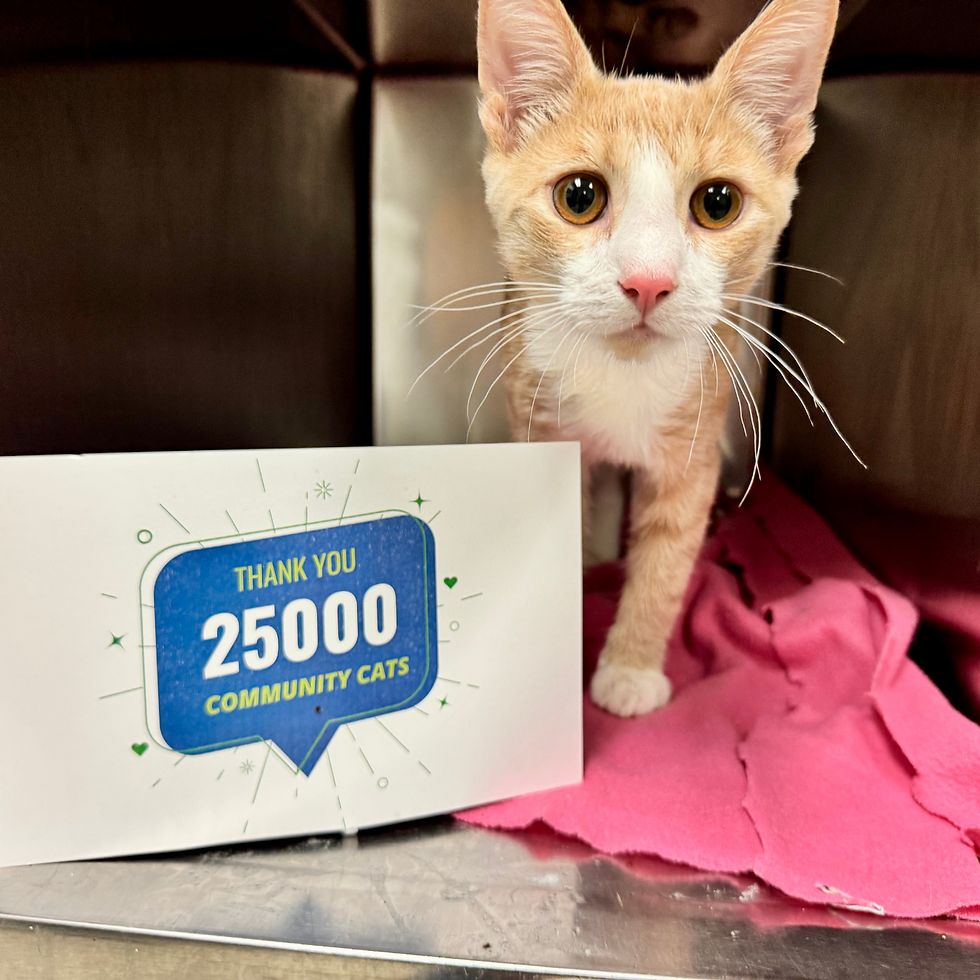Healthy Weight – A New Year’s Plan For Your Pet
- petcommunitycenter

- Jan 8, 2024
- 3 min read

Losing weight and improving fitness are always among top New Year resolutions, and what better time than the New Year to also think about your pet’s weight and fitness?
Just like with people, keeping your pet at a healthy weight gives them their best chance of a longer, healthier, and pain-free life. It lowers their risk of arthritis, diabetes, high blood pressure, breathing problems, back problems, kidney disease, some forms of cancer, and can also reduce their risk of joint injuries.
And, if your pet has arthritis, maintaining a healthy weight can make it easier to manage pain or discomfort. Excess weight can reduce your pet’s life expectancy by more than two years, according to the American Veterinary Medical Association (AVMA).

How do you know if your pet’s weight is healthy?
There is no “one-size-fits-all” healthy weight for pets, and, depending on a cat or dog’s breed, height, and age, the recommendations for ideal weight will vary. Your best resource is your veterinarian. You can check your pet’s weight free of charge at almost any veterinary office, or you can weigh them on a scale at home.
Then, have an honest conversation with your vet to determine your pet’s ideal weight. Another good resource for determining the best weight for your pet is this Body Fat Index Chart that Hill’s has published for owner use.
As a general rule, pet owners should be able to feel a cat's or dog’s ribs with minimal fat covering them. A pet’s waist should be easily determined when looking at him or her from above, and an upward slope of the stomach should be visible when observing pets from the side. A cat or dog’s stomach should never hang low to the ground.

How do you control your pet's weight?
Your best tool for controlling your pet’s weight is their diet. Once you have determined the best weight for your pet, they should be fed according to what their ideal weight should be.
Consult your pet’s food bag for feeding directions and amounts, and measure out your pet’s food using a true measuring cup. Pets should have a consistent amount of food every day. You should also consider the kind and amount of treats your pet may be receiving – extras like treats should make up no more than 10% of your pet’s calorie intake.
Also, ensure that your pet is not receiving table scraps or food from sources other than you (food from other pets’ dishes, snacks from children, etc.).
Exercise is also important for your pet’s overall health. Not only does it burn calories, it provides both physical and mental stimulation and can be a great bonding experience. When making an exercise plan, you should consider your pet’s age, as well as their (and your!) physical ability.

If walking your pet is a good option for you, you can find the AVMA’s tips for successful walks with dogs and cats here.
Other popular forms of exercise are inside play (toys, fetch, laser lights, etc.), swimming, and dog parks. Remember that a gradual and consistent increase in activity level is best for your pet.
Maintaining a healthy weight, diet, and lifestyle is just as important for your pet as it is for you, as it affects their overall health and quality of life. Pets at a healthy weight are not only much more likely to enjoy their days, they may also have more days to enjoy.




You will be told to play five nights at freddy's to get things done when you are on guard at midnight. You'll have to wait for the secrets in that game.
Feel the vibrant energy of every electrifying strike as you explore this captivating puzzle dimension—Block Breaker unblocked awaits your immediate command.
Experience the ultimate drifting challenge with Drift Boss unblocked! Tap to navigate sharp turns and test your driving skills. Collect coins to unlock exciting new cars and compete for the highest score. Drift Boss play online offers easy-to-learn controls and endless entertainment that will keep you coming back for more!
Mastering treacherous ramps and unstable bridges becomes an art of equilibrium in Drive Mad unblocked, where Martin Magni's physics-driven creation transforms obstacle navigation into a delicate dance of calculated movements across wildly inventive landscapes.
Mastering Sprunky's rhythms mirrors the dedication Pet Community Center shows in serving pets and their families.